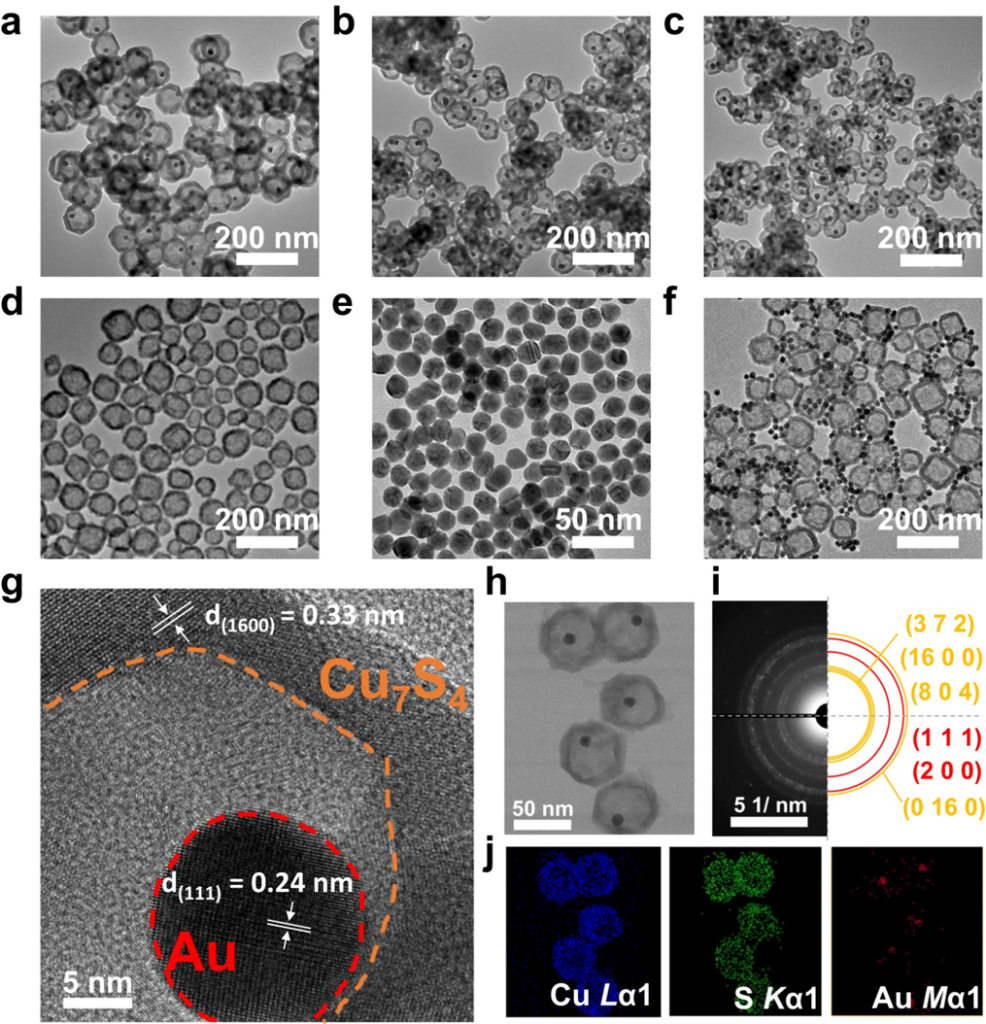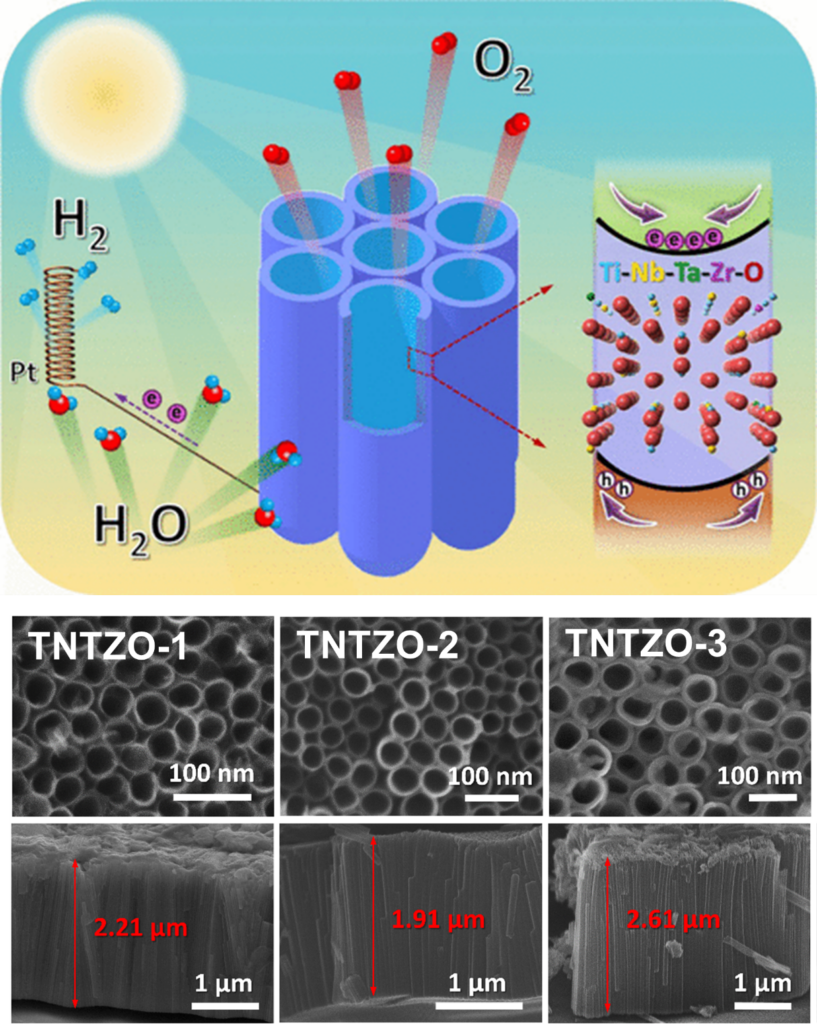Research Topics
Dual-plasmonic Yolk@Shell Nanocrystals for Hydrogen Production under Visible and Near Infrared Spectral Region
Near infrared energy remains untapped toward the maneuvering of entire solar spectrum harvesting for fulfilling the nuts and bolts of solar hydrogen production. We report the use of Au@Cu7S4 nanocrystals as dual plasmonic photocatalysts for remarkable solar hydrogen production. The superiority of Au@Cu7S4 lies in the prevalence of long-lived charge separation states under both visible and near infrared (NIR) excitation along with the advantageous features of the yolk@shell nanostructures. Ultrafast spectroscopic data reveal the prevalence of long-lived charge separation states for Au@Cu7S4 under both visible and near infrared excitation. Combined with the advantageous features of yolk@shell nanostructures, Au@Cu7S4 achieves a peak quantum yield of 9.4% at 500 nm and a record-breaking quantum yield of 7.3% at 2200 nm for hydrogen production in the absence of additional co-catalysts. The current study has delivered a conceptually attractive yet practically efficient dual-plasmonic photocatalyst paradigm capable of harvesting photons over the entire solar spectrum and beyond. Moreover, using dual-plasmonic heterostructures as photocatalysts in photocatalytic applications is still in its infancy. Our findings not only present a special type of plasmonic photocatalytic platform enabling solar fuel generation from untapped NIR energy, but also advance the fundamental understanding of peculiar nonstoichiometric semiconductor nanocrystals and their utility in photocatalysis. In particular, the revelation of the remarkable NIR activity of Au@Cu7S4 is exciting and inspiring because it can fill the gap in harvesting the NIR spectrum for the currently available photocatalysts.


Structure Control of Ti−Nb−Ta−Zr−O Nanotubes Array by Anodization and Its Application for Photoelectrochemical Water Splitting
Poor kinetics of hole transportation at the electrode/electrolyte interface is regarded as a primary cause for the mediocre performance of n-type TiO2 photoelectrodes. By adopting nanotubes as the electrode backbone, light absorption and carrier collection can be spatially decoupled, allowing n-type TiO2, with its short hole diffusion length, to maximize the use of the available photoexcited charge carriers during operation in photoelectrochemical (PEC) water splitting. Here, we presented a delicate electrochemical anodization process for the preparation of quaternary Ti−Nb−Ta−Zr−O mixed-oxide (denoted as TNTZO) nanotube arrays and demonstrated their utility in PEC water splitting. Data reveal that the superior photoactivity of TNTZO over pristine TiO2 originated from the introduction of Nd, Ta, and Zr elements, which enhanced the amount of accessible charge carriers, modified the electronic structure, and improved the hole injection kinetics for expediting water splitting. By modulating the water content of the electrolyte employed in the anodization process, the wall thickness of the grown TNTZO nanotubes can be reduced to a size smaller than that of the depletion layer thickness, realizing a fully depleted state for charge carriers to further advance the PEC performance. Hydrogen evolution tests demonstrate the practical efficacy of TNTZO for realizing solar hydrogen production.




